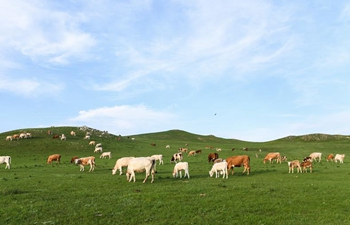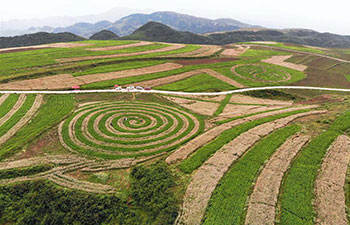GENEVA, July 27 (Xinhua) -- The unusually hot and dry summer in parts of the northern hemisphere has turned fields and forests into fuel for fires raging from the Arctic to the Mediterranean, with far-reaching impacts for the environment, ecosystems, human health and the climate, the World Meteorological Organization (WMO) said on Friday.
In a latest statement, the WMO confirmed that the northern part of the world is warming faster than the planet as a whole, and that heat is drying out forests and making them more susceptible to burn. A recent study found Earth's boreal forests are now burning at a rate unseen in at least 10,000 years.
The Intergovernmental Panel on Climate Change, in its Fifth Assessment Report, said that the frequency and extent of wildfires in southern Europe increased significantly after the 1970s as a result of fuel accumulation, climate change and extreme weather events, and future wildfire risk is projected to increase in southern Europe.
Earlier on Tuesday night, the latest deadly fires fanned by strong winds killed dozens of people near Athens, Greece, in one of the country's worst tragedies for years. Temperatures on Monday reached about 38 degrees Celsius there with strong west winds.
In addition to the direct threat from burning, wildfires also release pollutants detrimental for human health and ecosystems. According to the World Health Organization, exposure to particulate matter is the main public health threat from short-term exposure to wildfire smoke. The impacts range from eye and respiratory tract irritation to more serious disorders, including reduced lung function, bronchitis, exacerbated asthma and premature death.
Meanwhile, vegetation fires release large amounts of particulate matter and toxic gases including carbon monoxide, nitrogen oxides, and non-methane organic compounds into the atmosphere which are part of the extensive measurements performed by many stations of the Global Atmosphere Watch Program.
The WMO concluded that in addition to dry vegetation and high temperatures, another key player in spreading the fire are wind direction and wind speed. However, the prediction of the wind conditions and how they are altered by fire turn out to be rather challenging, since the wind conditions near a fire affect a rather small region and might thus not be recognized by the weather station that is closest by.
Wildfires are currently one of the five hazards that is in the scope of the WMO's High-Impact Weather Project (HIWeather). The WMO is now working on improving the capabilities to predict the propagation and impact of active fires, as well as fire risk, while at the same time seeking to improve the early warning information that can provide emergency responses, and the communication and usability thereof.

















